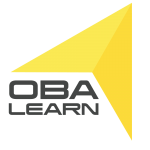Are You Using the Right Type of Cost?
By: Lianabel Oliver
Costs do not come in a one-size-fits-all category. There are different costs for different purposes depending on the question being asked. Costs used for one purpose may not be appropriate for another.
An understanding of the different cost classifications and how they are used for decision support is a fundamental building block for analyzing and interpreting financial information.
Cost Behavior
This cost classification establishes a relationship between the cost of an item and how it varies with changes in sales or production volumes.
Variable costs vary directly and proportionately with changes in volume such as commissions and production materials.
Fixed costs do not vary with changes in volume such as depreciation or corporate allocations.
Discretionary costs are fixed costs that vary at the discretion of the manager. Some examples of discretionary costs include training, travel, and maintenance. Discretionary costs are often misclassified as variable costs, because they are often adjusted up or down with volume changes. However, these adjustments are the result of a management judgement call; they do not vary directly and proportionately with changes in volume.
Semivariable costs have a fixed and a variable component; some examples include electricity, water, and even some types of direct or frontline labor costs.
Variable, fixed, and semivariable costs are used in budgeting and forecasting exercises, capacity utilization analysis, capital investment decisions, and cost analysis, among others.
Traceability
This cost classification is used to understand how resources are consumed by the item being measured.
Direct costs are those costs that can be directly traced to the item being measured such as a product or service. Labor and materials are generally considered direct costs. Equipment costs such as maintenance and depreciation can also be classified as direct costs if it can be specifically identified to the product or service being costed.
Indirect costs are costs that are common to more than one item and therefore, must be assigned to the item in a reasonable manner. Some examples of indirect costs include support labor, supervisory salaries, utilities, rent, and depreciation.
Direct and indirect costs are important in understanding the cost structure of product or service, analyzing make versus buy decisions, and subcontracting services among others.
Product or Service Costs
This cost classification is used to understand the total costs of the resources consumed by a product or service. Product or service costs are usually calculated by major cost element — typically labor, materials, and overhead or indirect costs.
These costs are general used to calculate the profitability of a product or service, understand its cost structure, and identify cost reduction opportunities.
By Functional Area
Costs are classified according to the area where the costs are incurred such as manufacturing, sales and marketing, distribution, research and development, and general administration.
This classification is used primarily for financial planning and reporting purposes. They can also be used to analyze the distribution of resources within a particular functional area.
By Degree of Control
Finally, costs are classified according to the degree of control that can be exerted by a manager.
Controllable costs are those over which a manager can exert significant influence. These costs typically include items such as salaries, fringe benefits, overtime, and travel, among others.
Non-controllable costs are those over which a manager has a very limited span of control. They include costs such as depreciation or allocations from support departments and corporate offices.
This cost classification is typically used to evaluate managerial performance, particularly the ability to control costs for an assigned area of responsibility.
In summary, one cost does not fit all. Be sure to use the right type of cost when analyzing business situations.

